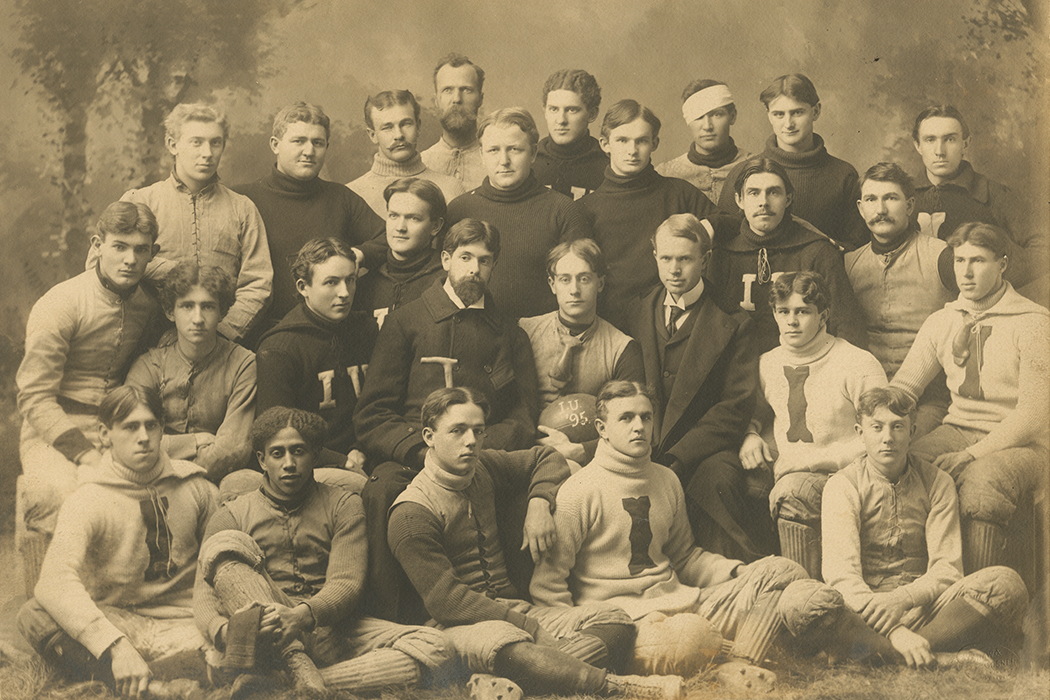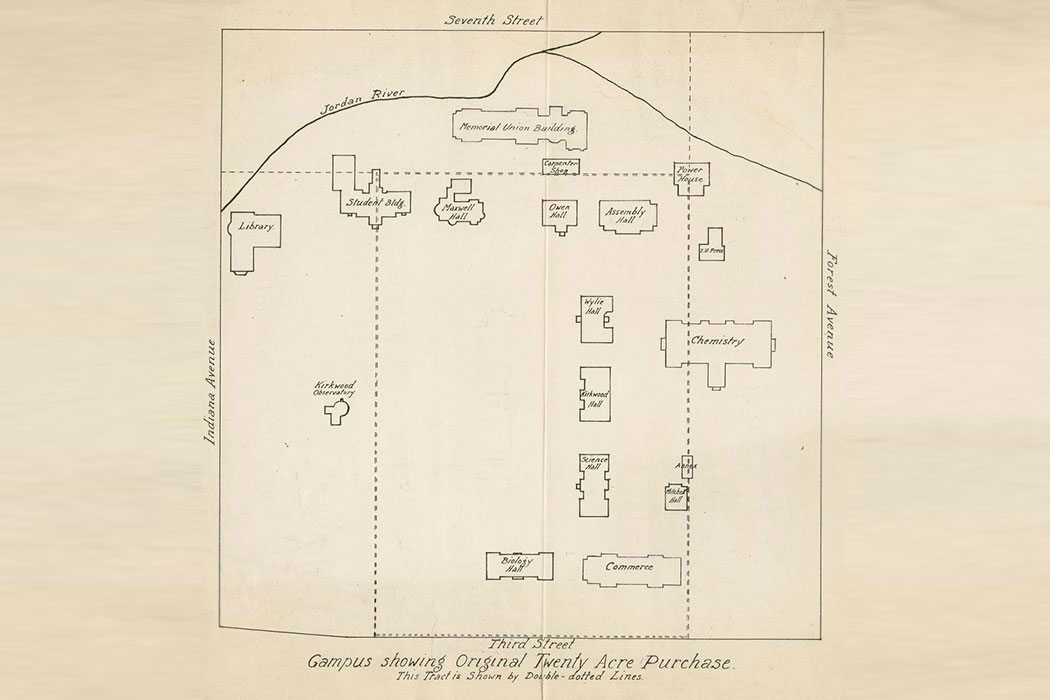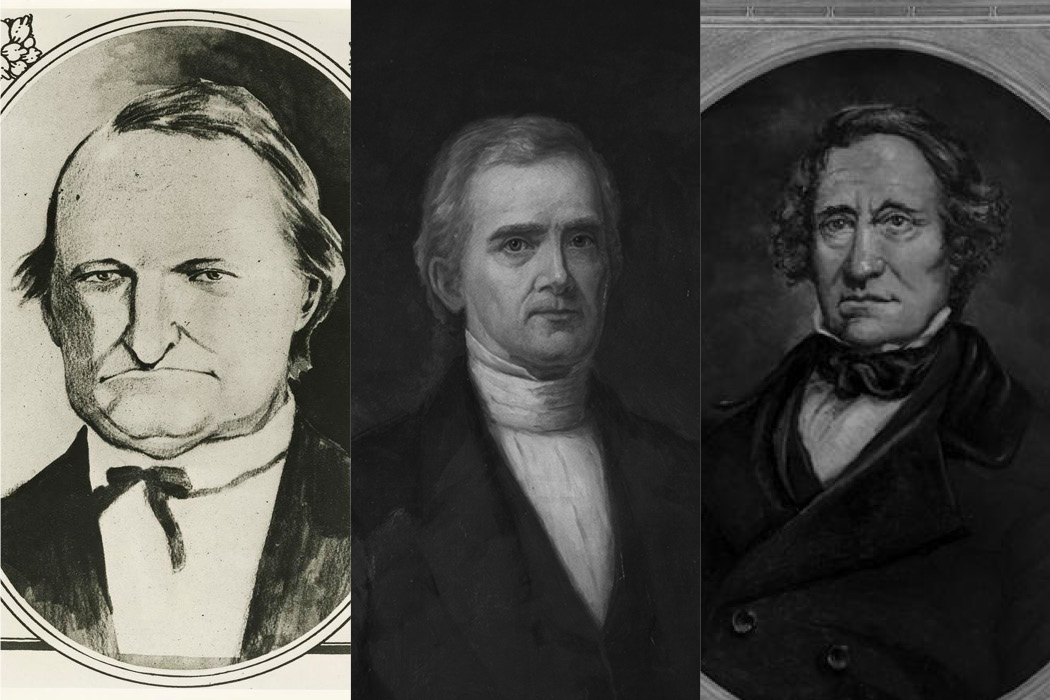A Gift in Gratitude
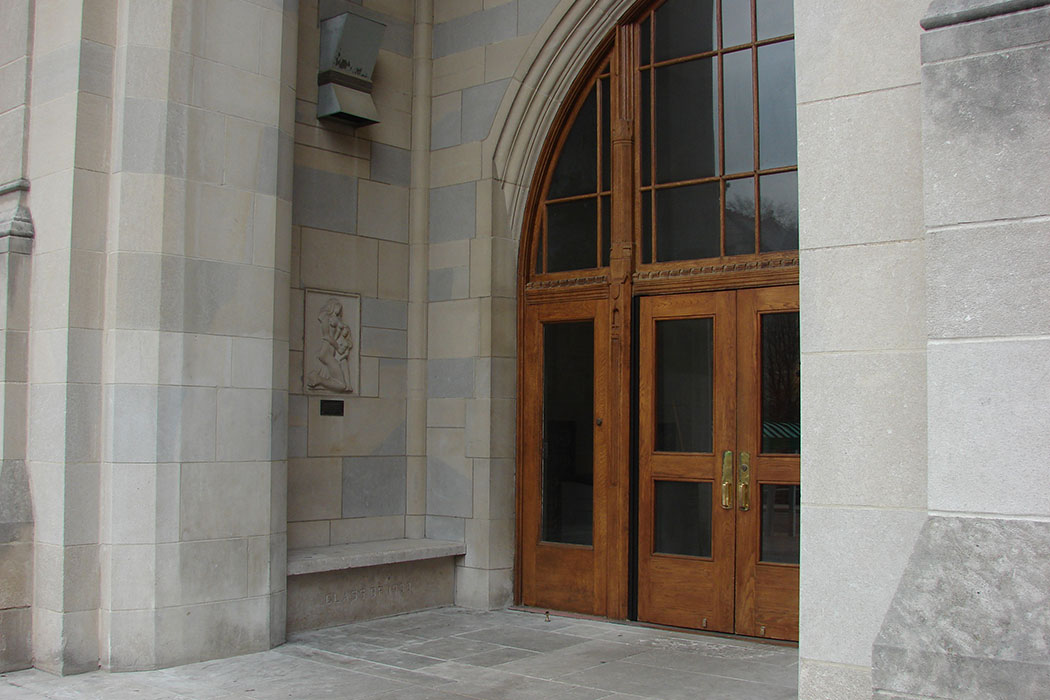
In the fall of 1916, as war was raging in Europe, twelve international students at Indiana University formed the Bloomington branch of the Association of Cosmopolitan Clubs, a national organization with the motto “Above all nations is humanity.” The Cosmo Club, which invited domestic students to join as well as international students, was part of the social fabric of IU for decades. In his autobiography, Herman B Wells, BS’24,MA’27, LLD’62, recalled that the club “staged annual international shows that attracted the interest and attention of the entire campus.”
In 1947, past president of the Cosmopolitan Club, Siroos Houshmand, and current president, Ghali Amin, proposed that foreign students present the university with a gift in gratitude for the institution’s support of its students from abroad. There were 193 international students on campus that year; 73 subscribed $264 (equivalent to more than $2700 today).
The result was a stone relief and bronze plate, which Christiane Cudenet, an exchange student from Paris, presented to the university on May 28, 1948. The plate read “To Indiana University in grateful remembrance of its hospitality and friendship, presented by foreign students, May 1948.”
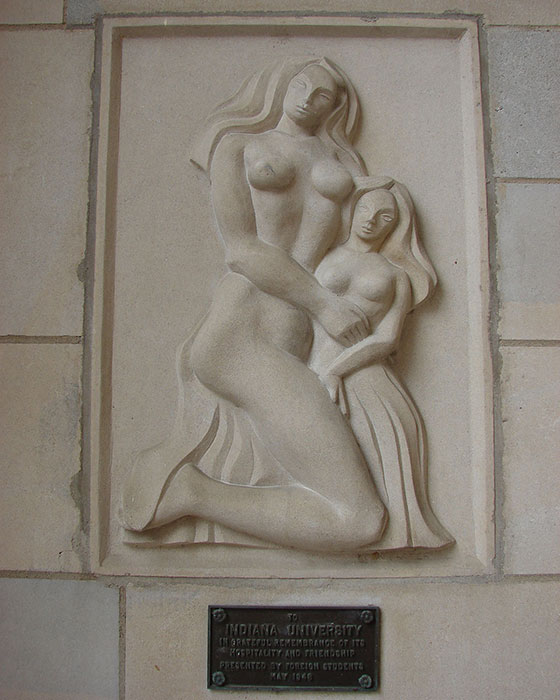
The stone relief depicts two women, the larger sheltering the smaller. According to the public announcement, “the larger of the two women symbolizes IU and the smaller one represents IU’s foreign students.” IU installed the relief in the portico of the south entrance to Alumni Hall at the Indiana Memorial Union, where hundreds of students and visitors continue to pass each day.
The sculpture was the work of Dean Carter, MFA’48, a post graduate student who had recently completed his degree at IU. After brief studies in Paris, he joined the faculty of Virginia Tech in 1950. He established the university’s art department and led the department for ten years, teaching sculpture, drawing, and art history until 1992. His work has been exhibited throughout the United States.
Cosmo Club President Ghali Amin returned to Egypt. Siroos Houshmand, a native of Tehran, stayed on in Indiana. He completed his AB in 1949 and his MD at the IU School of Medicine in 1953. As Cyrus Houshmand, he studied surgery at Columbia Presbyterian Medical Center in New York City and was resident surgeon there for four years. From 1958 to 1960, he served as captain of the surgical section of the Army’s 14th Field Hospital in Germany.
Houshmand returned to Indiana to take up his surgical practice in Bloomington. He became a life member of the IU Alumni Association and a member of the Varsity Club. His donations to IU included a house east of the campus. He was active in the Indiana Division of the American Cancer Society and chaired its speakers bureau.
Dr. Houshmand died in 1972 at the age of 46 after suffering a heart attack while driving from Indianapolis to Bloomington. Herman B Wells noted the untimely death, saying “I have known him since his student days and have valued his friendship greatly. His death will be a loss not only to his profession, in which he served the people of Bloomington so well, but also in the community’s cultural and intellectual life.”
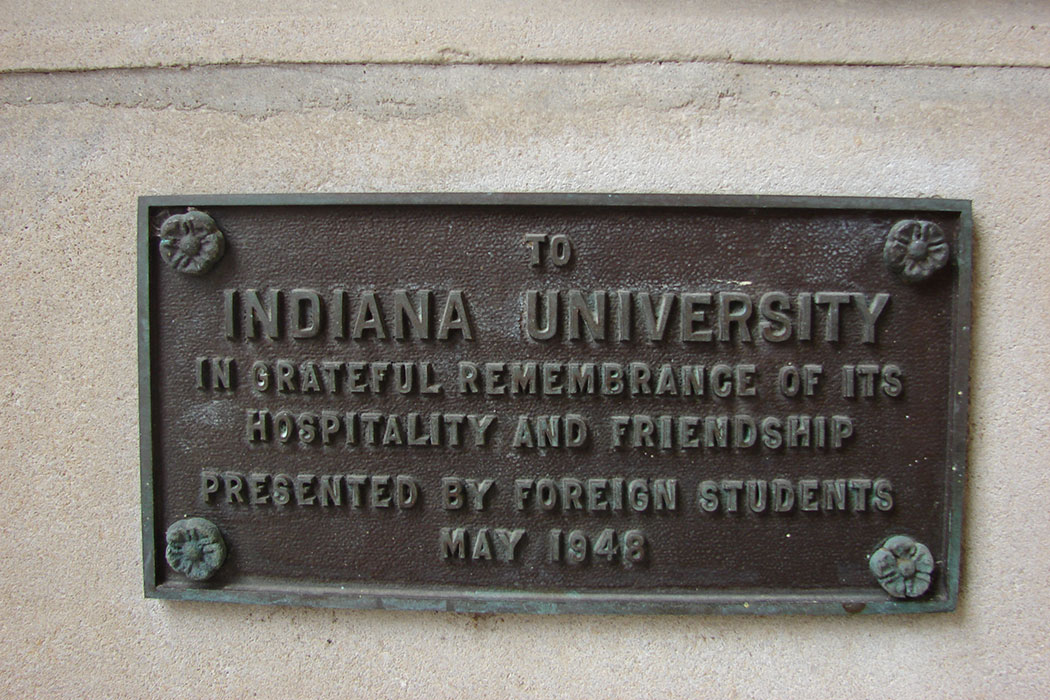
This article originally appeared in the January 2018 issue of 200: The IU Bicentennial Magazine, a special six-issue magazine that highlights Bicentennial activities and shares untold stories from the dynamic history of Indiana University. Visit 200.iu.edu for more Bicentennial information.
Tags from the story
Written By
Lynn Schoch
Lynn Schoch, MA’76, is with the Office of the Vice President for International Affairs, and is a contributor to 200: The IU Bicentennial Magazine.
